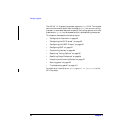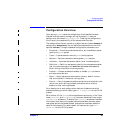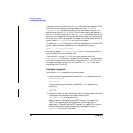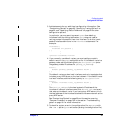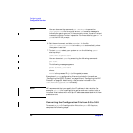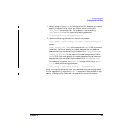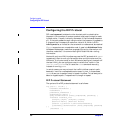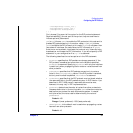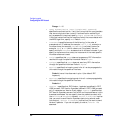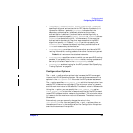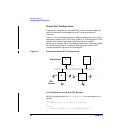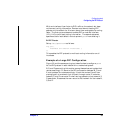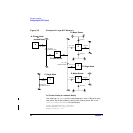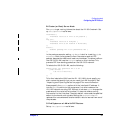
Configuring gated
Configuring the RIP Protocol
Chapter 350
Configuring the RIP Protocol
RIP uses hopcount to determine the shortest path to a destination.
Hopcount is the number of routers a packet must pass through to reach
its destination. If a path is directly connected, it has the lowest hopcount
of 1. If the path passes through a single router, the hopcount increases to
2. Hopcount can increase to a maximum value of 16, which is RIP’s
infinity metric, an indication that a network or node cannot be reached.
If gated encounters an unreachable node, it goes into Holddown Mode.
Holddown Mode stops a node from propagating routing information until
the other nodes that it is communicating with stabilize their routing
information.
Hosts with only one LAN interface may use the RIP protocol with gated
to passively listen to routing information when multiple routers on the
LAN exist. If only one router on the LAN exists (leaving only one path off
the local LAN), you can configure a static route to that router in the
/etc/rc.config.d/net file, or issue the route command manually,
instead of running gated.
In certain cases, you may not want the traffic to follow a certain path,
because it incurs an unacceptable cost or security risk. In these cases,
gated allows you to assign a metric to each interface. This allows you to
select or bypass a path, irrespective of its length or speed.
RIP Protocol Statement
The syntax of the RIP protocol statement is as follows:
rip yes|no | on|off [ {
broadcast|nobroadcast ;
nocheckzero ;
preference
preference
;
defaultmetric
metric
;
query authentication [none|[[simple|md5]
password
]] ;
interface
interface_list
[noripin]|[ripin] [noripout]|[ripout]
[metricin
metric
] [metricout
metric
]
[version 1]|[version 2 [multicast|broadcast]]
[[secondary] authentication [none|[simple|md5]
password
]
];
[interface ...]





